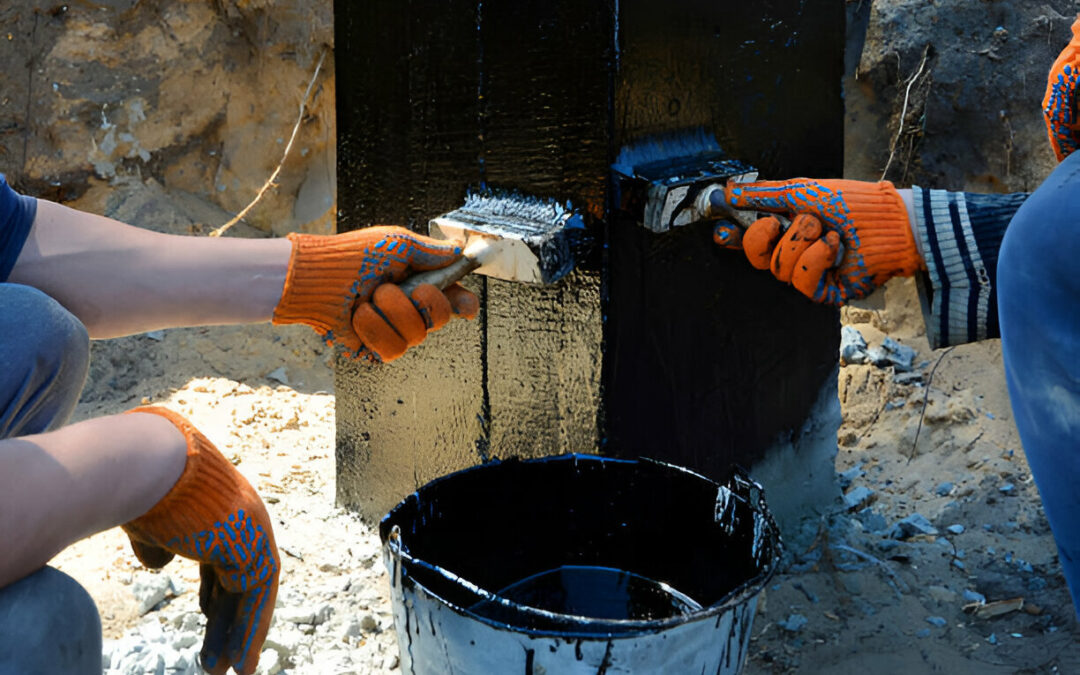Your home’s foundation is essential for structural integrity, yet it’s often overlooked until problems arise. One of the most common—and costly—issues homeowners face is a leaking foundation.
Water intrusion doesn’t just affect basements and crawl spaces; it can lead to mold growth, wall damage, musty odors, and even foundation failure if left untreated. Understanding why foundations leak and how waterproofing works can help you prevent damage before it starts.
With the right solutions, you can protect your property, improve indoor air quality, and preserve long-term home value.
Common Causes of Foundation Leaks
Foundation leaks can happen for a variety of reasons, most of which relate to water pressure, soil conditions, or construction flaws.
- Poor drainage around the home allows rainwater to pool against the foundation, increasing hydrostatic pressure.
- Cracks in concrete or block foundations form due to settling, shifting soil, or freeze-thaw cycles, creating paths for water.
- Improperly sloped landscapes or clogged gutters can funnel water directly toward your home’s base.
- Aging waterproofing materials, such as old sealants or membranes, lose effectiveness over time.
Recognizing these sources early allows you to take preventive action before small leaks become big headaches.
Signs You May Have a Foundation Leak
Catching the warning signs of foundation leaks early can save you from expensive repairs.
- Damp spots or puddles on basement floors after heavy rain are telltale signs of intrusion.
- White chalky residue (efflorescence) on walls indicates water is seeping through concrete and leaving mineral deposits.
- Musty odors, mold growth, or high humidity in lower levels of the home often point to hidden moisture.
- Visible wall cracks, especially those wider than ⅛ inch, may be letting water inside.
If you notice any of these symptoms, it’s important to consult a professional to assess the source and severity of the problem.
How Waterproofing Works to Prevent Leaks
Waterproofing addresses both current leaks and potential future issues by creating barriers and improving water flow.
- Exterior waterproofing involves applying membranes, sealants, or drainage panels to the outside of the foundation to stop water before it enters.
- Interior waterproofing systems include sealants, sump pumps, and vapor barriers that redirect or remove water after it enters.
- French drains or weeping tiles are installed around the home’s perimeter to collect and carry water away from the foundation.
- Proper grading and gutter maintenance help manage surface water and reduce hydrostatic pressure.
Waterproofing is most effective when it includes both surface solutions and subsurface strategies to address all sources of moisture.
Long-Term Benefits of Professional Waterproofing
Investing in foundation waterproofing is not just a short-term fix—it’s a long-term strategy to protect your home and its value.
- Prevents structural damage and costly repairs by keeping foundation walls strong and dry.
- Improves indoor air quality by reducing mold growth and musty odors in basements or crawl spaces.
- Increases usable living space, especially if you plan to finish or use your basement regularly.
- Boosts property value and buyer confidence if you ever decide to sell your home.
By resolving water issues at the source, waterproofing provides peace of mind and long-lasting protection for one of your most important investments.
Foundation leaks are a common but serious problem that can affect everything from your home’s safety to your comfort and health. By understanding why they occur and implementing effective waterproofing methods, you can protect your home from moisture damage year-round.
Whether you’re addressing an existing issue or looking to prevent future problems, professional waterproofing offers durable, proven solutions that safeguard your foundation—and everything above it—for years to come.

